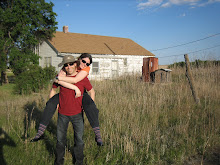On the topic of charts, I've been meaning to post some graphs that show what this disease actually looks like from a higher-up perspective and how we've been tracking it. Some people have asked whether my counts have returned back to normal after the chemo, or when they go up or down, *how much* they're going up or down.
The short answer is: no, the counts have not returned to normal. They've gone up and down a little bit, but they are still way under where they should be. From what I understand the purpose of the chemo is to help get your counts to somewhat reasonable levels in preparation for a transplant, since you need all the reserves you can muster. So a transplant is still imminent and is the only way we know that has a chance to actually *fix* the problem. In fact, after tracking such low counts for so long, I called to get my old medical records from 2001 (the last time I had my blood checked) to see if I was *ever* normal, since apart from the chemo I don't feel like I'm sick and it's hard to know when this thing actually started. But at least in 2001 I was normal :)
Anyway, the 3 main things we're looking at regularly are:
- Platelets
- Neutrophils (polys)
- Hemoglobin
The way to look at it is this - there are 3 types of blood cells in your body: red blood cells, white blood cells, and platelets. Each has a different purpose, but in their most basic form the red blood cells carry oxygen to your body (and CO2 back to your lungs) via a protein called hemoglobin, white blood cells called neutrophils fight infections and diseases, and platelets help your blood clot. So platelets track platelets, neutrophils track the bacteria-fighting capabilities of the white blood cells, and hemoglobin tracks the oxygen-carrying capacities of the red blood cells. This lets us track the 3 blood cell types by the role that's most important.
PlateletsHere's a graph of my platelet counts since I was diagnosed in June, and the range where the counts should be:

So you can see that they've gone up and down a little bit, but they're still very low, and each time we do a CBC (complete blood count) test the lab technicians re-check the values by hand and flag them with a "Critical Level" note and get verbal confirmation from my oncologist's assistant. So every one of my lab charts have all these little exclamation points all over them.
Anyway, as you know by know, platelets, or thrombocytes, are tiny little blood cells responsible for clotting. Not enough of them and you run the risk of bleeding into the brain, since some clotting is always needed to protect the blood from just running freely all over the body. Apart from bleeding and bruising, there aren't really any noticeable side effects that affect how you feel. Their average lifetime is about 9-12 days.
NeutrophilsHere's a graph of my neutrophil (or poly) counts:

There are 5 basic kinds of white blood cells: Neutrophils, Lymphocytes, Monocytes, Basophils, and Eosiniphils. Each serve a slightly different purpose. Neutrophils are in the class of polymorphonucleic cells (e.g. polys) and are the most abundant white blood cell. They are the main bacteria-fighting agents and are the first line of defense against infection, so they're tracked more closely than the others. Neutrophils can travel all over the body and are what give pus it's whitish/yellowish appearance. A low neutrophil count can lead to constant infection (e.g. runny nose, stuffy head) until it gets serious enough that your body can't even fight its own bacteria. The lifetime of a neutrophil is just a few hours, so there's not much you can do about transfusing them. Antibiotics are normally prescribed to help out if these fall too low. When my neutrophils were really low back in June, I remember having a runny nose and sore throat a lot of the time.
Check out this cool video of a neutrophil eating bacteria.HemoglobinHere's a graph of my hemoglobin counts:

A low hemoglobin level is referred to as being anemic, and indicates problems oxygenating the body. It leads to shortness of breath and in some cases cognitive problems (you gotta feed the brain somehow). Hemoglobin is a protein in red blood cells that is responsible for actually carrying the oxygen molecules around and is also what gives red blood cells their color. It's possible to have a normal red blood cell count but low hemoglobin levels, so measuring hemoglobin is a good way of measuring the body's ability to deliver oxygen and transport CO2 to the lungs. Hemoglobin levels below 5 are critical and from what I understand you have serious problems even standing up at this point. When they get this low, you need what's called a packed red blood cell transfusion to help boost the red blood cell counts, and thus the hemoglobin levels. The lifetime of a red blood cell is about 4 months. So far I haven't felt overly fatigued to the point of exhaustion (at least outside the worst part of the chemo), but there have been occasions where doing something like starting the lawnmower or running up a flight of stairs left me more winded than I remember.
Each one of these low counts has a name (e.g. thrombocytopenia, neutropenia), but low counts across all blood types is called pancytopenia. It's one of the signifying factors in MDS and is a result of the bone marrow not being able to produce *any* kind of blood cell very well.
So there you have it! Blood cells in a nut shell.











































